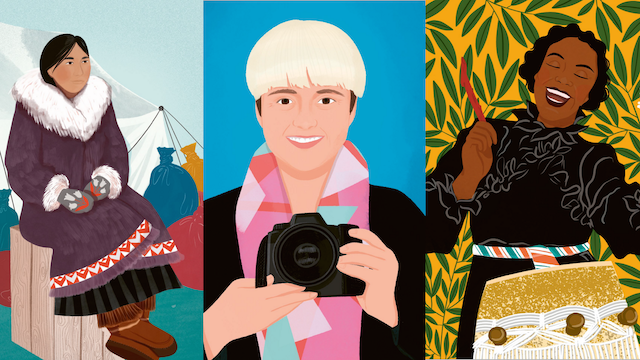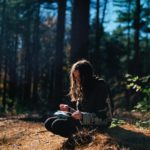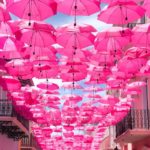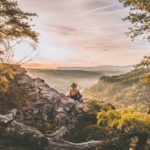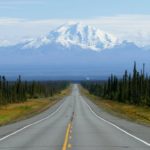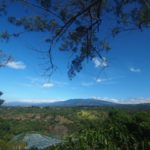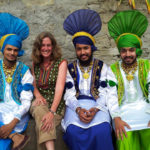Riding Sharks and Climbing Mountains: In Conversation with Ailsa Ross

Question: Can you name the first woman to have summitted Mt. Everest?
You probably know the first male duo to do so, Edmund Hillary and Tenzing Norgay. But the first woman? If you can’t (and you aren’t alone), then you need to read The Girl Who Rode a Shark, and Other Stories of Daring Women, written by Ailsa Ross, and illustrated by Amy Blackwell.
From aquanauts to astronauts, treetop explorers to eagle hunters, shark riders and mountain climbers, in The Girl Who Rode a Shark Ailsa Ross presents 50 bold, adventurous and pioneering female adventurers. Illustrated by Amy Blackwell, the book include a page of information on each of 50 fascinating subjects, alongside beautiful coloured illustrations. It’s ideal for older girls and young women, but can be enjoyed by any reader who wants to fill the gaps in their knowledge of contemporary and historical adventurers. While traditional history books have celebrated male adventurers and masculine feats of exploration, The Girl Who Rode a Shark shows not only that women have been equally bold in their travels, but that in doing so they have often resisted patriarchy and colonialism.
Answer: If you still can’t remember the name of the first woman to summit Mt. Everest, read on. We had the privilege of chatting with author Ailsa Ross about the book and about her own life as a travel writer and adventurer.

Tell me about where you came up with the idea for this book?
That was way back in 2013. I was an editor at a travel startup in Berlin and writing about adventurers through history. With dismay, I found I could easily list off names like Shackleton and T.E. Lawrence, but the only woman adventurer’s name that came to mind was the aviator Amelia Earhart’s.
I began doing some research, and that’s when I found out that women have been doing bold, brave, amazing things all through history.
In school, as part of the curriculum I learned the names of all the victors, the Columbuses and Magellans of the world. But now I was getting to learn about all those women who had resisted colonization — people like the 17th-century’s Queen Nzinga. She fought back against the Portuguese who were taking people away as slaves in her territory in present-day Angola. And she won.
When I was a kid, I loved the film Lawrence of Arabia. But now I was reading the story of the Swiss anarchist Isabelle Eberhardt. And I liked this version of adventure so much better. She wasn’t disguising herself as a Bedouin to spy for the British. She wasn’t pretending to be Muslim. She was sincerely a Sufi. And she was traveling across the Sahara to tell the stories of those people suffering under the horrors of French colonization.
I went to my agent to see if there could be a book in these stories. The UK publisher was the first to buy rights to the project, and me and my British editor, Rebecca, immediately got to work in searching for an illustrator.
My list of wants was big! I felt the artwork should be bright, modern, progressive — no depictions of Zora Neale Hurston or Cheryl Strayed as tiny-waisted Disney princesses allowed! Amy Blackwell was absolutely the perfect fit.
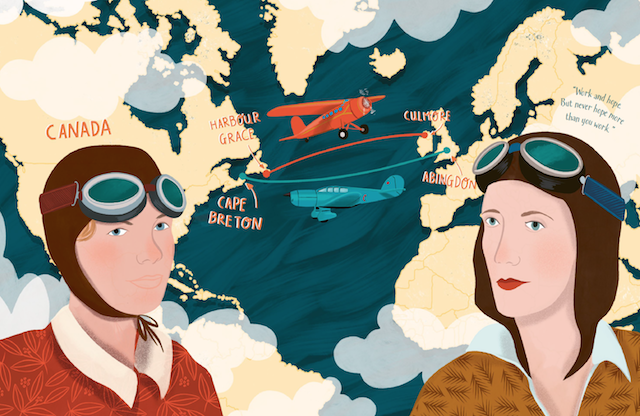
How did you come up with the format for the book? Why not, say, interviews, or a more ‘serious’ work of historical research for adults?
I’m actually working on a literary non-fiction project looking at the lives of eight women writers who were drawn to fierce places just now. But I knew I wanted my first project to be for kids. I blame Annie Dillard for this. In her memoir An American Childhood, she describes being a kid growing up in Pittsburgh. In those days, she loves everything! Playing in the woods. Riding her bike. Singing, painting, staring at pieces of rock and crystal in her little kid microscope. And then she becomes an adolescent. And her world grows small — to the size of boys and dances and tans.
She asks if this eclipsing of the world is what happens to every teenager. She asks if this is how the people around her had died on their feet — inevitably, helplessly?
I really want for kids — before they become teenagers who are (inevitable, helplessly?) lost to the world — to explore every little thing they might love. I figure that reading about women following their curiosity might spark new ideas in a kid. That reading about a palaeontologist like Bolor Minjin might make an eight-year-old go, ‘I love dinosaurs!’ And she will follow that curiosity in her and see where it goes. Or maybe reading about the treetop explorer Nalini Nadkarni will make a young reader go and climb a tree in their own backyard.
Sure, those readers might dissolve into the adolescent world of dances and tans for a few years. Because maybe that transition is helpless. Inevitable. But maybe, once they’re grown up? They’ll come back to those things they once loved as a kid. The dinosaurs. The trees. And they’ll find that the heart still wants what the heart wants. Being outside. Feeling grateful for all this, for being alive.
Why do you think a book like this is needed?
For those reasons. And because an Outside online survey done in 2017 found that only 13% of the magazine’s readers knew the name of Junko Tabei, the first woman to summit Everest. It’s beyond time that changed.
How did you select the women featured? I presume you didn’t struggle to find suitable subjects! (Or did you?)
There are hundreds more women I wanted to include. I felt it really important to include women from all around the world, from all through history. So every continent is covered. And the stories run from 231 BCE to today. I also went with a broad definition of ‘adventurer’ — one where adventure is an attitude, it’s being curious about the world. That really opened up the possibilities for the kinds of stories I could include.
I was excited to see a young woman from near my hometown (Laura Dekker, Whangarei, New Zealand) and from my adopted country (Mira Rai, Nepal) on pages next to each other! How did you find or research some of the featured women from countries that you’re not familiar with, or from the past, as some historical women are featured?
I was lucky enough to get to interview a few of the contemporary women in the book, including Manon Ossevoort – she traveled from her home in the Netherlands all the way to the South Pole, by tractor.
For the profiles of historical women, I dug into piles of diaries and biographies for many months. And then I read more general books for context into the times they were living in.
Details about the women living centuries ago were often sparse, and I typically had to rely on secondary sources. I didn’t want to add to the myths that had been tacked onto these real women’s lives over the years, so if a detail was widely reported as true – for example, that the Scottish fur trapper Isobel Gunn followed her lover to Canada – but was conjecture, I didn’t include it in the book.
Many Pink Pangea readers are aspiring writers and travel writers. Could you tell me a bit about how you got to this stage in your writing career? What other kinds of work do you do, and how long have you been doing it? Do you have any words of wisdom for women writers starting out?
I studied law at university, but I realized practicing Scots Law was going to keep me in, well, Scotland. And I really wanted to travel. So after graduation, I took an online travel writing course, and that led to an editor job at the magazine that hosted the course. After a few years of that, I began writing this book.
I’m currently supported by a grant from the Writers’ Trust of Canada, which gets me a house in the Yukon to write from for the next three months, and also a stipend. It’s once-in-a-lifetime stuff, and I’ll soon be back to my usual round of fact-checking and pitching articles from my apartment to pay the bills. I don’t love the precariousness of freelancing.
My advice would be, look for grants! There are definitely ones available for emerging writers, and they’re so worth applying to.
What has been your own personal favourite adventure you’ve been on?
Walking alone across the Isle of Skye a couple of years ago. I was a few weeks away from marrying my partner, and for seven days I wanted to do anything but think about flower arrangements, weddings, cheese platters.
I wanted shifting light, sensation, floods of purple heather. I wanted to see ragged horned sheep so wild they were left with mohawks of wool from where they’d ran, fleeing their summer shearing. I wanted mountains unleashed from their clouds. Oystercatchers pecking between rocks. Golden eagles and sea eagles. Bog cotton and tiny yellow flowers shaped like stars. I wanted a lot for a week’s walking. And I got it. And I felt grateful. For being outside. For being alive.
The Girl Who Rode a Shark, written by Ailsa Ross and illustrated by Amy Blackwell can be purchased from Amazon or IndieBound.
